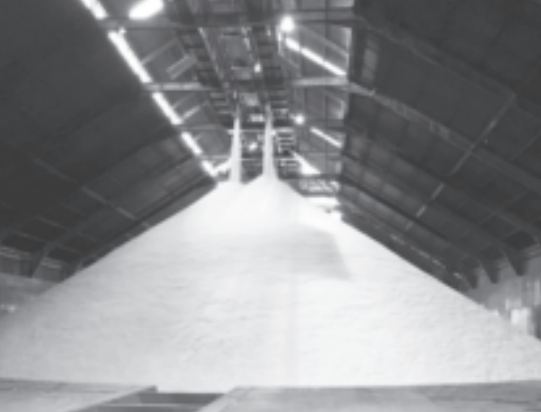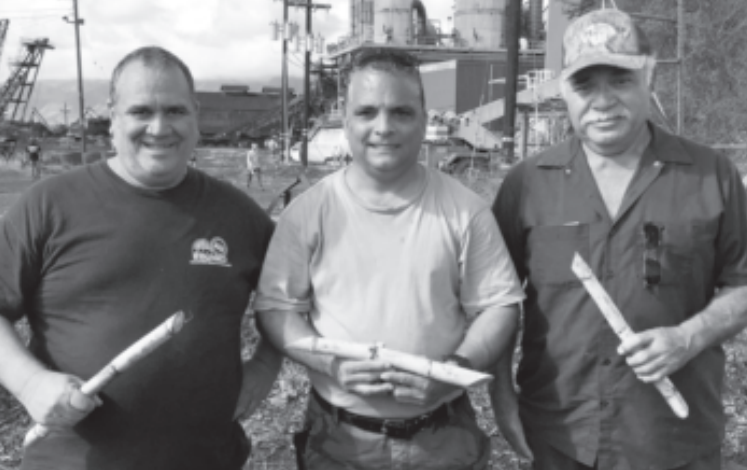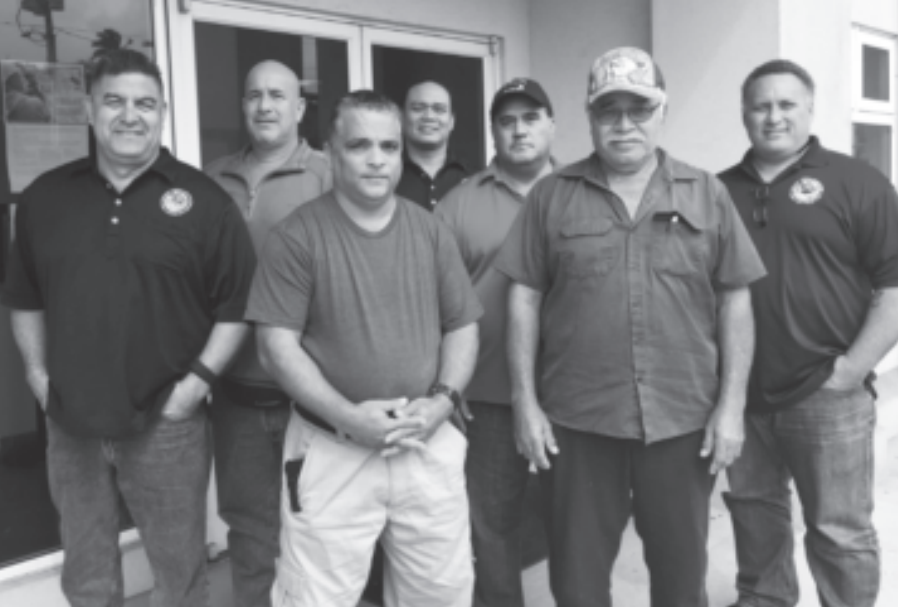KAHULUI—The closure of Hawaiian Commercial & Sugar Company (HC&S), the last sugar plantation in Hawaii, will have ripple effects throughout the community. The plantation works with a number of businesses on Maui, but none more closely than Kahului Trucking’s Bulk Sugar operation.
Bulk Sugar is inextricably tied to sugar growing and harvesting. Once the sugar is harvested from the fields, brought to the mill, then processed into raw sugar and molasses, the product is trucked to the bulk sugar operations near the harbor, then loaded onto ships headed for the refinery in California. The refinery then processes the sugar into the white crystals that we all know and love to add to coffee or use to bake and cook with.
Sugar’s long journey to the kitchen table: trucks, belts, and ships
Most of us take sugar for granted. We are familiar with the pink-and-white packaging and the C&H label, but how many of us know that sugar is not transported in bags from the mill to the docks and on the ships, but in tankers and along miles of underground conveyor belts?
The mountain of sugar shown in the photo accompanying this article is raw sugar—loaded onto trucks from the mill, weighed with the truck, then spilled onto conveyor belts that transport the raw sugar to the top of a warehouse from which the sugar is discharged, creating a conical mountain of sugar. When the ships are ready to receive their cargo, the sugar is transported via more conveyor belts directly into the ship’s hold. In all, the conveyor belts are several miles long!
The process is mechanized to a large degree, but there are workers who must make sure the machines operate properly and the sugar is discharged into the hold without losses. That is where the ILWU members at Kahului Trucking’s Bulk Sugar operation come into play.
The workers who move
Maui-produced sugar Frank Rocha is the weighmaster, called the “scaleman.” He operates the scales that weigh the trucks and their loads, then sends the sugar onto the conveyor belts for warehouse storage. Frank, age 64, has worked in Bulk Sugar for 22 years. He started with Kahului Trucking’s general transportation division at age 24 and worked for Kahului Trucking a total of 36 years. Frank retired on November 30. He said the closing of HC&S and Bulk Sugar is “very sad.” He enjoyed his coworkers and his bosses and will miss the job.
Cyrus Boteilho is a mechanic. He makes sure all the machines, especially the conveyor belts, operate properly. If the conveyor belts break down, the raw sugar cannot be transported to the warehouse or the ships. Worse yet, if the sugar backs up and spills, the product is lost—wasting the efforts of all who worked in the fields and the mill to grow and process the sugar cane. Cyrus has worked for Kahului Trucking a total of 28 years. He has been with the bulk sugar operation for the past four-and-a-half years, but will return in January to Kahului Trucking’s general operations where his mechanic skills and certifications will be a definite asset.

Dennis Nobriga is a warehouseman. He operates the machinery that runs the conveyor belts and ensures that the warehouse where the raw sugar is deposited is well-maintained. Dennis is the chairman of the bulk sugar unit under the Hawaii Longshore Division, which, with Division Director William Haole and Vice Division Director Richard Kamoe, negotiated a final contract for the Bulk Sugar members. The agreement provides for a “special allowance” due to the closure, seven extra months of medical coverage, and reimbursement for retraining fees and relocation expenses.

KT&S workers (l-r): Frank Rocha, Dennis Nobriga, Cyrus Boteilho, the last remaining bulk sugar workers, in front of the HC&S mill. (Left) A mountain of raw sugar is poured into the bulk sugar warehouse.
Economic changes
The closing of HC&S and the Bulk Sugar operation marks the end of an era. At one time, sugar plantations were a major part of Maui’s economy—just as it was for much of Hawaii. The raw sugar sent to Bulk Sugar came not just from HC&S but from Wailuku Sugar and Pioneer Mill in Lahaina. As each of the plantations shut down, Bulk Sugar downsized until only three workers remained. Truly, sugar touched the lives of many workers in varied industries, not just the plantation. Large chunks of Maui’s working community will feel the effects of the closure of HC&S.
The sugar industry made Hawaii into the diverse community it is today. In fact, many of us would not be here at all if not for sugar. And with unionization, sugar workers became among the highest paid agricultural workers in the world. The respect between union and management was cemented when the ILWU took more than 25,000 workers on strike in 1946— and stayed out for 79 days.
So when you take your coffee with sugar or eat pastries loaded with sugar, remember the role that sugar played in shaping Hawaii. The sugar you eat will no longer be from Hawaii, but never forget Hawaii’s sugar roots and the men and women who were a part of that history.

Bulk sugar workers with Hawaii Longshore Division officers (l-r): Vice Division Director Richard Kamoe, Business Agent Dennis Morton, Nobriga, Division Secretary-Treasurer Drake Delaforce, Unit 2201 Chair Sam Kaaihue, Boteilho, and Division Director William Haole.
Message from the President—cont. from page 1
So many people in key states did not vote and then were shocked and ashamed of the presidential election results. It was an expensive lesson, and it will be workers who pay the price.
However, the lesson will not be lost on us if we use it to build political engagement. Local 142 is committed to educating and empowering members in every way possible, and will keep you informed about any educational events or activities happening in your Division. Please continue to read the Voice and keep in contact with your Business Agents and officers.
Can Hawaii lead the way?
Historically, Hawaii has enacted progressive laws that promote social and workplace justice. ILWU Hawaii Division Director Yoshito Takamine, who was largely elected to the State House of Representatives by ILWU members, helped to author and pass the Hawaii Pre-Paid Healthcare Act. The law requires employer-provided medical coverage for many non-union workers across the state and was enacted in 1974—40 years before Obamacare.
Hawaii has proven and continues to prove that it is possible to pass laws that put people first. Hawaii’s election results also show that working families, when educated about the issues, can and will vote in their own best interests by electing candidates who support them.
Our state has the opportunity to be a true leader in the U.S. by maintaining a government aligned with working people and communities. ILWU members can continue to play a significant role as leaders in Hawaii by building and growing our political action program. Let us strengthen our brotherhood and emphasize our political might—we already have a foundation of aloha.
Thank you again for your aloha and kokua this political season. Let’s keep it up and show the whole country how it’s done.
From the Editor of the VOICE of the ILWU
Hi, my name is Mie! I am the new editor of the Voice. Local 142 hired me in late October, and I am so thankful that they did; this union gives me faith in my ideals and values. Thanks to the people in and out of the office I have met who are so kind and supportive, I become more confident in this job every day.
I welcome any suggestions for stories, comments, or input you might have. This is YOUR paper and I want it to be as dynamic as the people who make up this membership.
I look forward to hearing from you and learning from you. Please don’t hesitate to contact me at mie.omori@ilwulocal142.org. Thank you for reading, and aloha.
